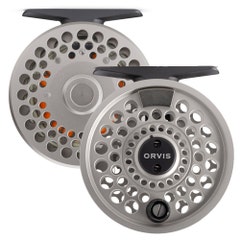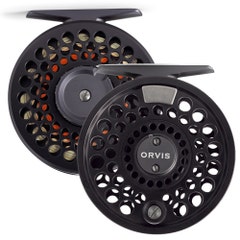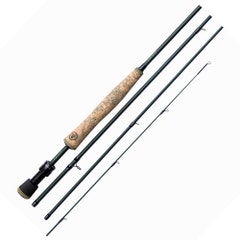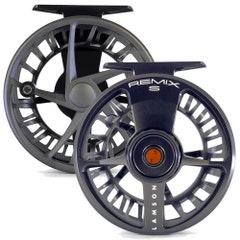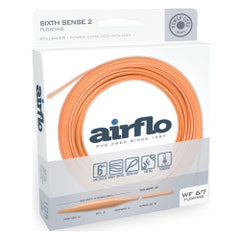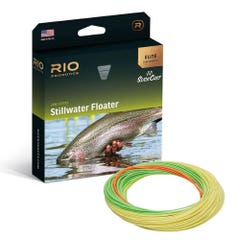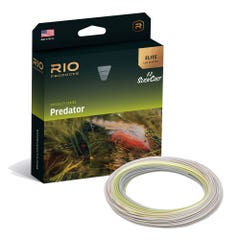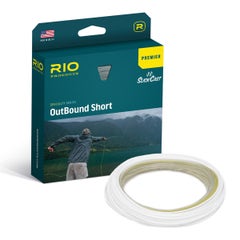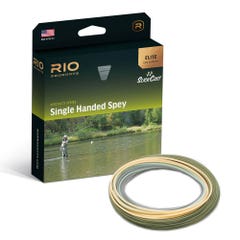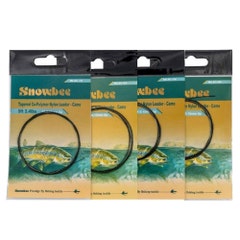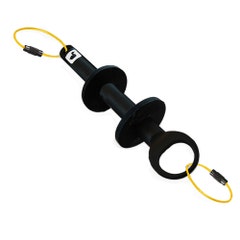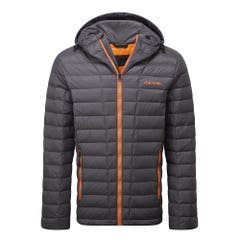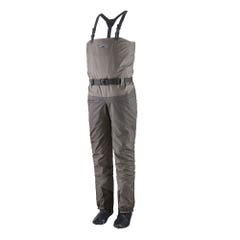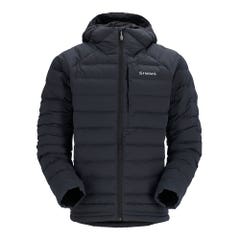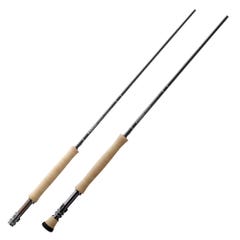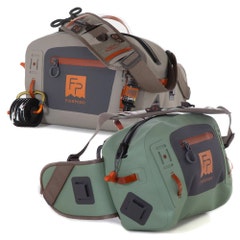Often referred to as the ‘Lady of the Stream’, the Grayling is another member of the Salmonidae family. Part of the Genus Thymallus, which comes from Greek meaning ‘Thyme smell’ which, if you have ever landed one you will only be too aware of the distinctive aroma that they produce, similar to that of the herb. Two grayling fishing species that are targeted by fly anglers are the European Grayling ‘Thymallus thymallus’ and the Arctic Grayling ‘Thymallus arcticus’.
European Grayling
The European grayling is found widely throughout the United Kingdom, the Ural Mountains, France and the Balkans. Easily recognisable by its silvery scales and large dorsal fin, grayling love clean, cold running water. In some instances, they do inhabit stillwater and even brackish conditions but don’t tolerate poor water quality and are often the first indicators of any imbalances or incidents of pollution.
There was a time in the UK in particular that the grayling was highly persecuted and was seen as a pest due to the misconception that they hampered the stocks of wild trout and would compete for food and territory. Thankfully times have changed and the once much maligned species is today held in very high regard and actively targeted. This is particularly due to the fact that the season for grayling follows that of the coarse fishing season and make a great target for the fly angler outside of the river trout fishing season.
Grayling can be targeted from the 16th of June to the 14th of March but inevitably they can and will be caught out of season in much the same way as Trout are during the winter. Grayling tend to shoal up particularly in the colder months of the year and, once located, several fish can be taken from the same area of water. In a similar way to trout, around 80% of what grayling eat is either on, or just off the bottom with very little coming from the surface.
The grayling possesses a more underslung mouth than a trout and surface feeding isn’t as natural to them but, in the right conditions can be free rising and happily take a well-presented dry fly. The European grayling can grow to lengths of around 60cm (24 inches) and reach weights of 5lbs or more.
Arctic Grayling
The Arctic grayling is an even more beautiful fish than its European cousin. Rather than a silver set of scales, the Arctic grayling has a mixture of blues, purples and a lavender shine to it with an even larger and more dramatic dorsal fin.
Found throughout the Arctic, Alaska, Canada and Siberia these fish thrive in some of the coldest conditions on the planet. This species is very free rising and are often caught on dry fly as well as nymphs. They have a hard core following from many anglers, and people like Peter Cockwill have made it their mission to catch some of the biggest grayling in the world. For many years he has chased world records in Alaska and holds several of them, the largest topping the scales at 5lb 1oz.
They grow larger than the European grayling and have a maximum recorded length or 76cm (30 inches) and have been reported to grown in excess of 8lbs in weight.


UK Grayling Fishing Venues and Seasons
Grayling now viewed as a legitimate fly targeted species have a great following in the UK and for some, the thought of catching a specimen ‘Lady of the Stream’ can be more appealing than that of a trout. Well spread throughout the UK but with no presence on the island of Ireland, opportunities to catch grayling often can be found on your doorstep. Certain rivers that hold some of the most impressive sized fish have become the ‘go to’ locations to try and land that fish of a lifetime.
Grayling are deceptively light in weight for their size and are often perceived to be much heavier than they actually are. For most anglers a genuine weighed 2lb fish would be referred to as a specimen. A 3lb fish would be for many referred to as a ‘fish of a lifetime’ but for a select few that have set themselves the ultimate goal, their target is to break the magical 4lb mark. Not many have achieved this goal in the UK with only a handful of rivers being known to regularly produce fish of this size. To put this achievement into perspective the official British record fish comes in at 4lb 8oz. Grayling tend to grow and stay in their year groups and numbers of larger fish can often be very cyclical, some years producing larger numbers of bigger fish before subsequent years when that year group are at much lower levels.
Grayling season follows the coarse fishing season and can be targeted from the 16th of June until the 14th of March. Grayling can and will be caught outside of the season and should be carefully unhooked and allowed to fully recover before release.


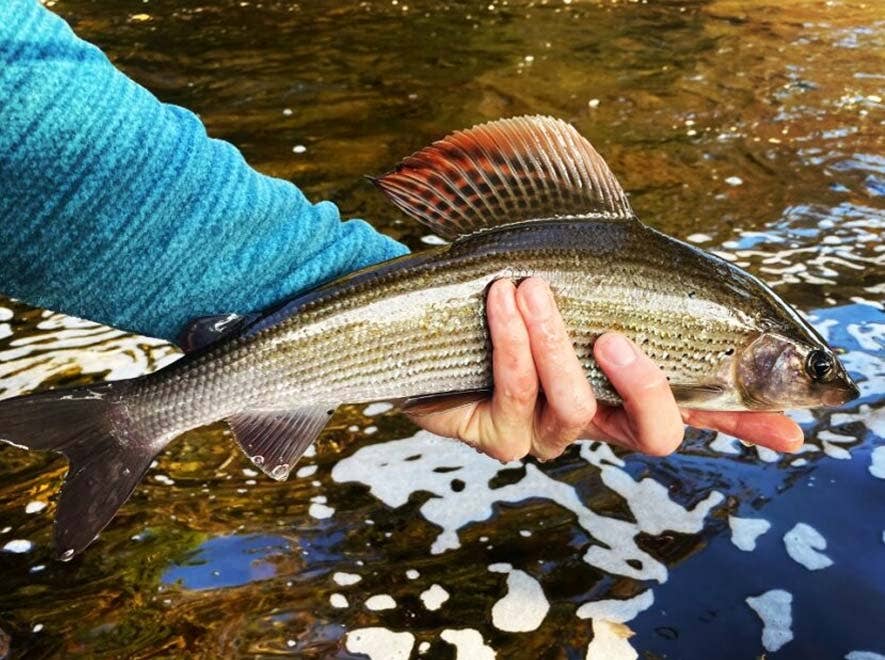

Some rivers that consistently hold large grayling are:
River Frome
A southern chalk stream that covers a total of 30 miles through the Dorset countryside before emptying into the sea at Poole Harbour near Wareham. This is one of, if not the most famous grayling river in the UK having had several British records landed from its waters over the last 40 years. It seems to have a genetic strain of grayling that just grows big, really big. Various day ticket water is available along with some syndicated stretches. This river also holds a population of salmon and sea trout although numbers have declined greatly over recent decades.
Welsh River Dee
A much longer river than the Frome, the Dee covers approximately 70 miles from its source to mouth. Rising up in Snowdonia it travels down to the Dee estuary in the most North easternmost part of north Wales. It is a rain-fed freestone river which also supports a population of brown trout, sea trout and salmon. It offers excellent value for money both with club waters and a variety of day tickets stretches available. Every year it plays host to the Hanak Grayling Fishing Festival with anglers taking part from all over Europe. It has been the venue for many angling competitions including several international and world championship competitions.
River Tweed and Teviot
Both these rivers are famed for their salmon and sea trout historically but both hold some fabulous grayling well over the 3lb mark. Typical rain-fed rivers that will rise and fall quickly with heavy rain in parts are huge rivers and can make grayling fishing tricky but with perseverance can reward an angler with some truly special fish. The Teviot is a tributary of the Tweed and offers club waters and some day tickets.
Driffield Beck
Driffield Beck is one of the most Northern chalk streams in the UK. More commonly associated with the south of England the river rises up from the same band of chalk that underlies the east of England and down into the more famous areas of Hampshire, Wiltshire and Dorset. Clear waters can allow the targeting of the larger grayling here and has produced many specimens over the years.
River Eden
A fabulous freestone river in the heart of Cumbria that offers fantastic fishing not only for some fast-growing fat grayling but some stunning wild brown trout, sea trout and salmon. Offering some exceptional fly hatches throughout the season this river can produce some large fish. Covering approximately 90 miles, there are plenty of stretches to fish, many inexpensive club waters and some day tickets also available. A beautiful part of the world that is well worth the trip to visit.
There are hundreds of other rivers in the UK that hold a head of grayling but these are just some of the more notable rivers that are well known for holding some specimens. It is not all about size and grayling offer great sport regardless of their size and can often save you from a blank on the hardest of days fishing.




How To Catch Grayling
Dry Fly Technique
Despite the Grayling having a mouth that is more attuned to bottom feeding, given a good hatch of fly they are more than happy to rise up for a well-presented dry fly. All of the same species of insect that a trout will take, a grayling will also or at least attempt. One of the key things when targeting grayling on the dry is that the timing of the strike needs to be a little quicker than that used for trout. The take is quicker and grayling almost suck a fly down rather than the lazier gulp more common with trout. It is very easy to be too slow to get a good hook up as they will very quickly spit a fly back out that doesn’t quite feel as it should.
Knotless tapered leaders of between 7.5’ and 12’ with matching tippets attached and simply adjusted for the conditions and the amount of space in which you have to cast in a similar set up to that of trout. Try to use as long a leader as you can manage to gain the very best of presentation.
The Duo Technique
This is a great method for searching out in freestone waters or for targeting small shoals while sight fishing. It allows the fly to be tantalisingly drifted past fish and, often when fish are shoaled up the element of competition can come into play, and fish will move further than usual to intercept a fly so as to deny another the opportunity. Suspending a small nymph under a buoyant dry fly covers two layers of the water and increases your chance of a take. Often the dry fly will be larger than hatching flies and this can prove to be irresistible when a fish decides as to whether or not it is worth coming up to feed. Very much a case of calories consumed versus calories expelled and a large fly can bring a fish up from out of nowhere.
Start off with a knotless tapered leader to which you will attach your indicator dry fly, these are traditionally a Klinkhammer style curved shank para-dun pattern, browse our full range of Fulling Mill Flies. On the back of this attach a length of fluorocarbon tippet of approximately the same length as the depth of the water you are fishing. This will allow you fly to sink down to the bottom without getting caught up too often. The dry will act as both a dry fly and as a strike indicator for the trailing nymph below, if it moves, dips or deviates in any way shape or form you must strike.
Nymphing Technique
There are several different nymphing techniques for targeting grayling. With around 80% of a graylings diet being either on or just off the bottom this is the primary technique for many anglers. Whatever nymphing technique you wish to utilise; in the same way as dry fly fishing, it’s about getting your flies down but allowing them to travel at the same speed as the river current.
Whether using more traditional upstream nymphing with 2-3 rods lengths of line, Czech nymphing with a super short line close quarters, high sticking or a more modern Euro style of nymphing, the leaders set up are very similar. The final part of the leader can have a very simple set up of fluorocarbon tippet with between 1 and 3 flies that are spaced apart from 20-30” between each. These flies are then allowed to trundle downstream at the pace of the river bumping along the riverbed in the same way as a natural insect that had been blown off station would act.
Various methods of bite indication can be used, from simply watching your braided loop at the end of your fly line, to strike indicator yarn, stick on foam indicators, indicator leader material for French nymphing or by simply using a short piece of off cut fly line that has been treated with Mucilin line grease. As with the duo, if this indicator moves in any way you must assume it is a take from a fish. If you stop to think if it could have been a take, it will inevitably be too late and the fish will have rejected the pattern again.
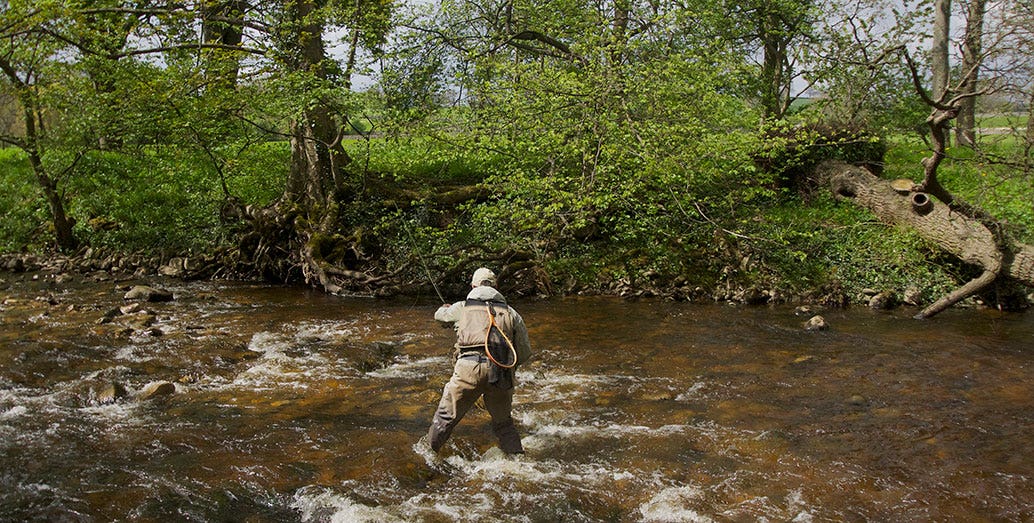

Tackle for Grayling Fishing
Grayling Fishing Rods
The tackle that you choose for grayling will be the same as that for trout. The length of your fly rod will very much be dictated by the size of the water and the amount of cover that is along the riverbank. A small intimate stream my require rods a little as 7’ or less in length but as the rivers start to widen the longer rods of 8’6’’ and 9’ will come in to play more.
The medium to large pieces of water more and more often now are being tackled with longer lighter line euro style nymph rods. In many instances doing away with the need to take 2 rods to the river. The extra length makes them ideal for Euro nymphing but many of the rods are equally as at home casting dry flies to free rising fish with long leaders.
This is a rough outline of the different lengths and weight of rods and what they are designed to do:
- 6’ - 8’6” - small rivers and streams usually for a line rating between #2 and #5
- 8’6” - 9’ - medium rivers usually for a line rating between #3 and #5
- 10’ – 11’+ - Euro style river nymph fishing typically for a line rating between #2 and #5
Grayling Fishing Reels
With floating lines doing the brunt of the river work opting for a large arbor design fly reels is always going to minimise the amount of memory that is transferred onto the fly line. With an inherent memory, the tighter a loop the line is stored on the reel the more that will manifest into the line. A larger more open loop from a large diameter fly line will minimise this from happening. Whether you opt for a composite, cast aluminium or a fully machined frame as always it is important to make sure that the outfit is properly balanced.
This is even more true with the long, light Euro style rods that may only be as light as a 2 weight. Do not be tempted to put a 2/3 reel onto these rods as they will be too light and cause the outfit to be unbalanced. A reel that is more likely to be in the 5/6 or even 7/8 range (dependant on the reels physical weight) is far more likely to give you the right balance and reduce fatigue after a long day on the water with an outstretched arm.
Grayling Fishing Lines
The majority of the time you will only need a floating fly line when chasing grayling. Traditionally a double taper (DT) would be the ‘go to’ choice of fly line taper but the weight forward (WF) has taken over that mantle and is now more widely used by anglers. With literally hundreds of different tapers on offer you can tailor the taper to your exact requirements of your fishing situation.
Lines will offer fantastic presentation with quick loading for short range casting (such as the RIO Creek), tapers for roll and Spey casting (such as the RIO Single Hand Spey), more aggressive front tapers for turning over indicators and large flies or with longer heads that make mending your line easier for the very longest of dead drifts (such as the RIO Technical Trout). Couple this with specialist Euro nymphing style lines that offer the most sensitive of bite detection (such as the RIO Technical Euro Nymph) the river angler has never had more choice or tools in their armoury.
Some other items you will require are:
Fishing Nets
For rivers that don’t allow anglers to wade and particularly with any kind of bankside vegetation or elevated banks, a collapsible net that has an extending handle will save many a blush and will also double up for use on small stillwaters. A river where the angler is allowed to wade can easily be attacked with a small ‘pan’ style net as the need to reach to distance isn’t necessary - check our our range of McLean’s nets.
Flies and Fly box
When river fishing choosing the right fly box can be confusing but many anglers will opt for multiple boxes so that they can keep the type of fly in family groups. A box for large dries, one for small dries and one for nymphs is pretty common and allows you to reduce your time searching for the right pattern in the wrong box. Waterproof boxes not only save money on flies getting rusty but should you drop them in the river when closed they will float like a cork and can hopefully be retrieved easily. A good tip is to attach a short length of mono or similar material to the box so that if dropped they won’t disappear downstream before they can be retrieved - check our our range of C&F fly boxes.
When it comes to your choice of grayling flies you will pretty quickly find your favourites. Fulling Mill and other manufacturers have created small pre-selected packs of ‘Must Have’ flies to get you started. It is important to have a wide variety of weights in you nymphs, lighter flies for shallower slower water through to the heaviest of flies for fast deep water as the aim of the game is to get down to the river bed or as close to it as you can. The pattern itself can often be less important that the weight and the depth at which it will fish.


Fishing Sunglasses
Particularly on chalk streams where sight fishing is the most common approach having polarised fishing sunglasses in the right colour of lens will drastically improve your chances of spotting your fish. Copper or bronze for normal light conditions and a yellow lens for dull or low light conditions to enhance the brightness of the day. These will aid fish spotting and more importantly protect your eyes from any wayward casts - check out our range of Smith Optics Sunglasses.
Grayling Fishing Essentials
There are a few other bits that you will require to complete your grayling fishing tackle setup and essential kit. These include:
- Leaders and tippets: Carry a range of breaking strains and lengths of knotless tapered leaders, these will give you the best presentation when fishing dry fly or the duo. A mixture of tippet materials in both copolymer and fluorocarbon in a variety of breaking strains will allow for you to tailor your leaders for any situation or required depth of water and increase the life span of the tapered leaders themselves.
- Floatant/mud: Depending on the materials that your dry flies are tied with will depend on the type of floatant that you may wish to use. Gels, sprays and powders are the most common and each has they preferred material to work with. Desiccants powders and preparatory gels are the top choices but not all work well with certain materials like Cul De Canard feathers, for CDC try Frogs Fanny. Mud, or Fullers Earth is a great material for degreasing your leaders and tippets and reduce their shine and improve your presentation especially for those tricky fish. Simply apply a small amount to your fingers and run them down the length of your leader to treat.
How to hook, play, land, handle, release a Grayling
It's essential you are familiar with best practices for catching through to releasing a grayling to ensure the fish is treated with care. Our guide on how to catch trout goes in depth on this - you can read the full details on how to hook, play, land, handle, release a Grayling.
Grayling fishing can offer some great sport especially if you are a river fanatic and still long for running water after the trout season has ended. Keep an eye on the weather as winter rain can make fishing near impossible and on some types of rain fed water can make them dangerous as well. Wrap up warm, fill a flask with your favourite brew (take a look at our YETI range for insulated flasks) and get yourself out on the river bank!
If you need any further advice for Grayling fishing or indeed have any top tips of your own, please leave your comments below! It’s great to share & chat. You can also share with all your friends via our social sharing buttons at the top of the page.


